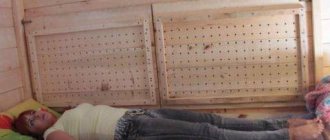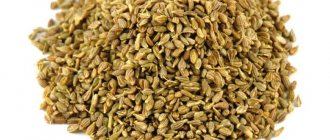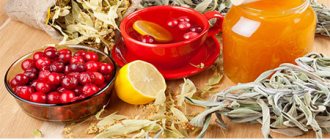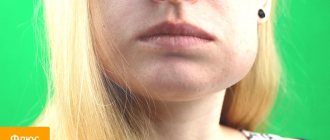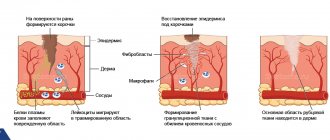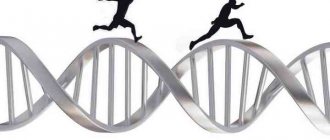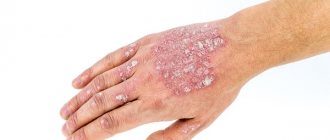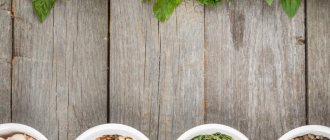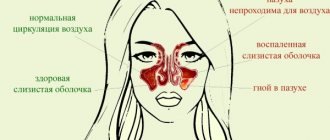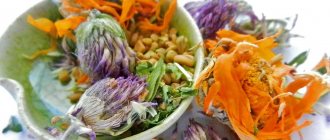Features of treatment
An attack of bradycardia with a heart rate of up to 50 beats/minute most often has almost no effect on the state of health, and a person learns about a decrease in heart rate by chance during a routine examination.
A similar course occurs in sinus bradycardia, and treatment with folk remedies, supplemented by physical education, in this case will help normalize the pulse. If bradycardia appears due to internal diseases, such as cholecystitis or diaphragmatic hernia, then folk remedies for the heart will be ineffective, and the underlying cause must be treated with medications under the supervision of a doctor.
It is possible to speed up the pulse and get rid of bradycardia using traditional methods of treatment in cases associated with cardiac dysfunction.
One of the reliable ways to force the heart to more actively pump blood through the vessels is a cup of coffee or black tea. These drinks should not be abused, but 1-2 cups for bradycardia in the absence of organic heart damage will improve the patient’s condition.
Among the medications in tablets, you can take Caffeine-Sodium Benzoate for bradycardia, which is useful for improving the condition, but not with constant use, but only during attacks.
This is interesting: Tea with sage - benefits and harm
Folk remedies for cardiac bradycardia
It is useful to use folk remedies for bradycardia together with medications prescribed by a doctor. If a person has an attack and requires emergency help, some unconventional methods will help normalize the condition and prevent the development of negative consequences. Based on natural ingredients, you can make effective decoctions, infusions and tinctures. The treatment regimen and prescriptions must be agreed with the doctor.
Treatment of neurogenic bradycardia
The severity of the clinical picture of the disease underlies the choice of treatment tactics. If it is possible to relieve an attack with medications, then isadrin, alupent, and atropine are used. Some patients have intolerance to these drugs, then ephedrine is used. In extreme cases, when drug treatment is impossible, or its implementation has proven ineffective, surgical intervention is used. A pacemaker is often implanted and appropriate medications are prescribed if necessary.
Basics of treating the disease
How to treat bradycardia? Can it be cured at home? And is it always necessary to treat this disease?
Treatment of bradycardia almost always takes place in a hospital; this disease can be cured at home only if it is caused by fasting for the purpose of losing weight. If the diet has not been very long, and only mild or moderate bradycardia is diagnosed, then the violations can be corrected with proper nutrition.
In all other cases, examination and treatment in a hospital setting are required. Children, regardless of the causes of the pathology, are treated only under the supervision of a pediatric cardiologist.
Depending on what caused the decrease in heart rate, the following is carried out:
- elimination of the provoking factor (giving up bad habits, treating infectious processes), very often this is enough to eliminate the symptoms that have arisen;
- establishing a proper work and rest regime;
- selection of adequate physical activity appropriate to age and general health;
- creating a menu for nutritious meals;
- prescription of medications.
In severe cases (usually with weakness of the sinus node or with complete blockades, when the conduction of the cardiac impulse is completely blocked), bradycardia is treated by implanting a pacemaker. The indication for implantation of a rhythm stimulator is a decrease in heart rate below 40 per minute, if there is a pause between contractions and pauses of more than 2 seconds or in the presence of frequently occurring bradyarrhythmia.
If there are no dysfunctions of the organs, and the person’s general condition does not suffer, then drug treatment is not required. Such people are given recommendations regarding their daily routine and proper nutrition, leaving them registered with a cardiologist at a risk group for the development of pathology.
Symptoms and signs
Bradycardia has clinical symptoms and objective signs. Objective signs of bradycardia are pulse rate and changes in ECG readings. Clinical manifestations include various complaints of poor health. Among the symptoms of bradycardia, the most common are:
- feeling of lack of air;
- swelling;
- lowering blood pressure;
- fainting;
- pallor of the mucous membranes and skin;
- state of general weakness;
- convulsions;
- fast fatiguability;
- short-term visual impairment;
- dyspnea;
- dizziness;
- low concentration, absent-mindedness.
The symptoms of bradycardia presented above, as a rule, have different levels of severity. It is worth noting that with bradycardia, both all of the listed symptoms, and only some of them, develop. They are not specific, so they are often mistaken by patients for signs of other diseases or aging. If sinus bradycardia is maintained at a level of 40–59 beats per minute, the person does not experience any clinical symptoms. If the heart rhythm disturbance reaches 30–40 beats/min, fatigue, weakness occurs, attention and memory deteriorate, shortness of breath, swelling, dizziness appear, vision is impaired, and the skin turns pale. When the heart rate decreases to 30 beats per minute or less, a person may experience seizures or fainting. In case of loss of consciousness due to severe bradycardia, urgent medical assistance should be provided to prevent respiratory arrest with further death.
How to stop an attack?
Features of first aid for bradycardia depend on the person’s age, state of health and pulse rate. If someone feels bad in front of you, you should immediately take their pulse. This is done as follows:
- Two fingers are placed on the jugular vein or wrist.
- Timed for 1 minute.
- Count the blows carefully.
Of course, it’s better to have a tonometer at hand. It will also help determine your blood pressure. But if you don’t have any tools at hand, then it’s better not to waste time, but to find out your heart rate using the method described above. Below we will look at the features of providing assistance depending on the pulse value.
Less than 50 beats per minute
If a person feels well or suffers from a couple of symptoms of bradycardia, it is necessary to give the patient strong tea or coffee. Caffeine increases heart rate and blood pressure. If you or your loved ones suffer from frequent attacks of bradycaria, you need to get a tincture of ginseng or belladonna. It can be added to drinks every day or taken in pure form in accordance with the instructions for use. These drugs help normalize blood pressure, which will prevent recurrence of the attack. It is allowed to take Zelenin drops, but other medications should not be used to relieve an attack.
The following will help increase your heart rate:
- Light exercise. It is enough to run in place for 10 minutes or quickly climb the stairs. It is advisable to introduce anaerobic physical exercise into regular practice. They not only increase the heart rate, but also promote the development of the cardiovascular system.
- Fresh air. It is necessary to ventilate the room every day. If the weather and ecology permit, you should walk outside for at least 1 hour. In winter, it is enough to ventilate the room.
As you can see, this type of bradycardia is the mildest. The abnormal heart rate is not so critical as to call an ambulance and send the patient to a hospital for treatment. But with frequent attacks of bradycardia, you should be examined.
Less than 40 beats per minute
In this condition, the risk of loss of consciousness increases rapidly. Your job is to prevent the person or yourself (if you are experiencing an attack yourself) from fainting. First, call an ambulance immediately. As a rule, with such a low pulse, the patient has several symptoms of bradycardia. Only an ambulance can help deal with them. The following actions will help alleviate the patient's condition:
- Placing a person on a bed or floor. The patient is positioned so that the legs are higher than the heart. For this reason, a chair or stool is not suitable for these manipulations. You can put a cushion under your feet. This action will help increase blood flow to the heart.
- For pain in the heart area, you can give the patient a little nitroglycerin. Both drops and tablets are effective. The pain will subside in 5-10 minutes
- If a person experiences an attack for the first time, then you can give him the tinctures described above or belladonna extract in tablets. They will take effect in 30-40 minutes.
- If a person has cardiovascular pathologies, then with the permission of the attending physician, isadrin can be given.
Talk to the patient so that he does not lose consciousness. Provide a flow of fresh air into the room. If it's winter outside, don't open all the windows. Better turn on the air conditioner, because... sudden hypothermia will further reduce the pulse rate and the person with a 90% probability will lose consciousness.
Help in difficult times
If the patient turns pale and loses consciousness, his relatives should not panic. What to do in this situation? You need to call an ambulance immediately. In order to increase the patient’s heart rate, it is necessary to administer Euphyllin at a dosage of 240-480 mg intravenously. During an attack of bradycardia, subcutaneous injections of Atropine are also given.
Emergency care for bradycardia has the following goals:
- Increased heart rate.
- Removing the patient from a fainting state.
- Reducing the likelihood of cardiac arrest and sudden death of a person.
Zelenin drops are also used to provide emergency care to a patient. But this drug can only be used if the heart rate is at least 45 beats per minute. At lower parameters, the use of Zelenin drops seems inappropriate.
Indirect cardiac massage during an attack of bradycardia
The patient’s relatives must control themselves: the life of their loved one depends on the coherence of their actions. How can one provide appropriate assistance to a patient with bradycardia at home? If the victim’s pulse is weakly palpable, it is recommended to give him an indirect cardiac massage:
- A small bag should be placed under the person's head.
- Massage should be done on a flat surface, for example, on the floor.
- You need to kneel next to the patient.
- The massage is essentially intense thrusts of the palms of the hands into the lower part of the sternum.
It is recommended to do at least 60 pushes per minute. Relatives of a person who has been diagnosed with bradycardia are advised to study information about resuscitation techniques presented on the World Wide Web in advance. In this case, they will feel more confident.
First aid for bradycardia at home
Bradycardia is not a separate disease that has arisen, but a sign of an external problem, mainly the heart, a mental problem or injury. The danger lies in the minimal supply of necessary oxygen and entails heart failure and heart attack.
Relevant symptoms.
- A common symptom is ringing in the ears.
- Enlarged veins, especially in the neck area.
- Real dizziness.
- If you look at the eyes, dilated pupils will be noticeable.
- The face takes on a red tint.
- The skin on the arms or legs noticeably loses sensitivity.
- Blue lips.
- Annoying restlessness, often without any reason.
- Disorders of consciousness of various types.
- Breathing at a slow pace.
- Jerking of some muscles, mainly the face or limbs.
- Uncontrolled going to the toilet.
How to quickly and effectively treat bradycardia
Motherwort juice also helps with heart bradycardia. The fresh plant should be washed and the juice thoroughly squeezed out. Take 30 drops per tablespoon of water. This method will relieve you of the symptoms of bradycardia forever.
If you have bradycardia, you should make an infusion of yarrow. Pour 15 grams of yarrow into a glass of water, boil for 15-20 minutes, then let it steep for an hour. Strain and take until recovery three times a day.
For heart bradycardia, you need to make medicine from wine. Boil half a liter of Cahors (any other wine) over low heat for 10 minutes, then add 50 grams of dry dill seeds (crush in advance) and boil for another 10 minutes over low heat. Drink the product three times a day, make sure it is at room temperature, but store it in the refrigerator.
Walnuts help in treating low heart rate. You need to mix half a kilogram of ground walnuts with 50 ml of sesame oil and 200 grams of sugar. Lemons need to be cut and poured with boiling water, let it brew, the result will be a thick mixture. Then mix the lemons and nuts together and take three times a day before meals.
Low heart rate can also be treated with honey. Mix equal proportions of honey and chopped walnuts and dried apricots in a blender. This vitamin collection perfectly nourishes the body as a whole, supports the heart and relieves symptoms of bradycardia.
When the pulse is low, make an alcohol tincture of nettle. Pour 20 grams of finely chopped nettle into 300 ml of alcohol and leave for 10 days in a dark place. Take 30 drops orally.
A panacea for all diseases is garlic and lemons. To help the heart, you need to make an infusion with lemon and garlic. You will need 10 lemons and 10 heads of garlic. Mix freshly squeezed lemon juice with garlic passed through a garlic press and pour honey over everything. Let the product steep for 10 days and take a tablespoon before meals.
Also, at home, bradycardia can be treated by collecting the following herbs: 30 grams of calamus, rowan and 50 grams of currants, hawthorn and dandelion roots. Pour boiling water over the herbs, let steep for an hour, strain. Drink this remedy throughout the day.
When your pulse is low, you can make an infusion of motherwort collection. Pour a tablespoon of dry collection with a glass of boiling water. Let it brew for 2 hours, filter and drink throughout the day. This remedy improves heart function, relieves low heart rate and shortness of breath.
Another recipe, this tincture of pine branches is famous for the rapid treatment of bradycardia. To make the medicine you need 70-100 grams of pine tops and 200 grams of alcohol. Let it sit in the sun for 10 days. Then take 15 drops three times half an hour before meals.
Prevention of low heart rate does not include anything special. It is necessary to avoid stress, increase the amount of vitamins in the diet, and say no to bad habits. Monitor your body weight and cholesterol levels, which have a bad effect on your heart function. Adhere to a healthy, proper lifestyle. Nowadays there are many medicines. But traditional medicine methods are no less effective, since they have a beneficial effect on the entire body as a whole and are natural. Thus, the treatment of low heart rate (bradycardia) is quite successful. You just need to know if you are allergic to certain components.
How to treat bradycardia with folk remedies
Bradycardia is a heartbeat that is too slow or irregular. The heart rate is less than 60 beats per minute, as a result of which the body does not receive enough oxygen. This phenomenon can cause dizziness and difficulty breathing during normal activities or light physical exertion. However, in many cases, a person does not feel a slow heartbeat. Sinus bradycardia is common in athletes and people who lead an active lifestyle and does not require treatment. At the same time, sometimes this phenomenon is associated with certain heart diseases. In this article we will tell you how to treat bradycardia with folk remedies.
Content
Causes
Symptoms
Risk factors
We invite you to familiarize yourself with the Indian mudras for the cardiovascular system:
Treatment
Treatment with folk remedies is aimed primarily at normalizing heart function. Despite the fact that such a disease is not considered by traditional medicine as a cause for special concern, we still recommend that you treat bradycardia in a timely manner in order to improve the quality of your life and protect yourself from more serious heart diseases. How to do this at home - read below.
Herbal collection No. 1
- Nettle leaves - 100 g
- Tea rose petals - 100 g
- Black currant leaves - 50 g
- Chamomile – 50 g
- Dandelion root – 50 g
- Angelica root – 50 g
- Yarrow herb - 20 g
Mix all ingredients thoroughly. Pour 1 teaspoon of the mixture with a glass of boiling water, leave covered for 20 minutes, strain. The infusion should be drunk warm, half a glass 2-3 times a day after meals.
Herbal tea No. 2
- Nettle leaves - 30 g
- Black currant leaves - 30 g
- Walnut leaves - 30 g
- Trifoliate leaves - 30 g
- Dandelion root – 30 g
- Rose hips - 30 g
- Hawthorn inflorescences – 30 g
Mix the herbs thoroughly. Take 1.5 tablespoons of the mixture and pour 1 glass of boiling water. Let it brew for 3 hours in a closed container, then strain and take 1 glass 3 times a day before meals. If you take such drugs every day, then after 2-3 months you will notice that your sinus bradycardia has completely disappeared.
Herbal tea No. 4
- Calamus rhizome – 30 g
- Rowan leaves - 30 g
- Rose petals – 50 g
- Black currant leaves - 50 g
- Dandelion root – 50 g
- Hawthorn inflorescences – 50 g
Preparation and use. Pour one tablespoon of the mixture into a glass of boiling water, leave covered for 30 minutes, strain. This remedy should be taken 2 times a day.
Alcohol tincture of nettle
Take 20g of finely chopped May nettle, pour in medical alcohol diluted to 45%, pour into a dark bottle and leave for 10 days. Use 20 -25 g drops before bed to treat bradycardia.
Wine
Many people have heard that wine is very useful for preventing heart disease. Moreover: this drink helps normalize heart rate, stabilize blood pressure, and dilate blood vessels. In addition, treating with such folk remedies is a pleasure. It’s not for nothing that the French drink wine in moderation every day. It has been proven that it is thanks to wine that they never have problems with the cardiovascular system.
So, to treat bradycardia, you will need to boil 1 liter of high-quality red wine and add cinnamon, honey and cumin seeds (1 tablespoon each) to it. This remedy should be taken warm, 50 ml every day, to activate the heart rhythm and slightly raise blood pressure. Remember that if you choose wine treatment, then you should not interfere with any other drugs.
Gingko
Gingko biloba is a unique plant for both treating the heart and fighting other ailments. This is an invaluable tool for improving memory, concentration and intellectual activity. It is especially useful for older people with memory and orientation disorders and Alzheimer's disease. But young, active people can also take advantage of the benefits that nature gives us. To treat bradycardia, brew 1 teaspoon of gingko in a cup of boiling water every morning and drink instead of tea. Within a month you will notice that you feel much better, and at the same time you do not need to spend money on expensive pharmacological drugs. By the way, we recommend growing Gingko biloba on your balcony or in the garden so that you always have this wonderful plant at hand.
Garlic
Everyone knows that garlic fights bacteria and infections. But few people have heard that this plant has a positive effect on blood circulation, brain activity, and the condition of blood vessels. Garlic improves the supply of oxygen throughout the body, but the main problem of bradycardia is precisely that the body feels a lack of oxygen. Garlic helped our great-grandmothers and great-grandfathers with many heart problems.
So, you need to eat 1 clove of garlic three times a day, washing it down with boiled water. This treatment is contraindicated for stomach ulcers; in all other cases, garlic is an ideal natural medicine.
Yarrow
Yarrow will help you activate the activity of your heart, but be extremely careful when treating with these folk remedies: the fact is that if the dosage is exceeded, headaches and an increase in heart rate are possible.
Hawthorn
Hawthorn has a tonic effect on the myocardium, slightly increases the heart rate, so it can be used to treat the early stages of bradycardia. This herb has an intense effect on the coronary arteries, has a sedative effect, lowers blood pressure, strengthens the walls of the arteries, and also
reduces the amount of lactic acid that is produced during sports training.
We recommend that you prepare an alcoholic tincture of hawthorn: pour 100 g of crushed fruits into 0.5 liters of vodka, close the lid tightly and leave in a dark place for 40 days. After this, strain the medicine. Treatment should be carried out as follows: dissolve 15 drops of alcohol tincture in a small amount of boiled water and drink in the morning on an empty stomach. This needs to be done within 2-3 months.
Prevention
Prevention of bradycardia is associated with the prevention of all cardiovascular diseases. People who already have heart problems should follow the recommendations that can be found on our website. You should also lead a healthy lifestyle, which consists of:
- physical activity;
- healthy eating;
- maintaining normal weight;
- control cholesterol and blood pressure levels;
- quitting smoking;
- restrictions on alcohol consumption.
You should also avoid stress, which is bad for your heart. Try to get enough sleep every day and eat healthy foods. So, the cardiovascular system will thank you if you exclude pork, lard, fatty cheeses, flour and fried foods from your diet.
Mechanisms of development of bradycardia
Bradycardia should be understood as a correct heart rhythm with a heart rate in adults of less than 60 beats/min, in children, depending on age, less than 70-90 beats/min.
The formation of bradycardia is based on various mechanisms, some of which are associated with the main pacemaker - the sinus node. Its location is determined at the mouth of the vena cava (superior and inferior), that is, in the right atrium.
Bradycardia can be considered as a normal variant if the heart is trained by regular physical activity. Therefore, athletes often have a heart rate less than 60 beats/min and still feel good.
Varieties
Depending on the location, bradycardia can be sinus and observed with heart block.
What is sinus bradycardia? This is a pathology caused by a disruption in the production of bioelectric impulses in the sinus node.
Heart blocks that may cause bradycardia:
- sinoatrial – with it there is a failure in the conduction of bioelectric impulses from the sinus node to the atria;
- atrioventricular - in this case, their conduction between the atria and ventricles is disrupted.
Blockades that cause bradycardia are encountered regularly in cardiologist practice.
Bradycardia is also distinguished:
- physiological - it is observed in trained endurance athletes, during sleep, as well as in ordinary people at rest;
- pathological - this type of bradycardia occurs in various nosologies.
Pathological bradycardia occurs:
- acute;
- chronic.
The acute form of the described pathology develops against the background of serious pathologies. In this case, the question of which tablets are prescribed for symptoms of bradycardia is inappropriate, since these critical pathologies should be eliminated:
- myocardial infarction;
- various types of myocarditis;
- intoxication – poisoning with biological and synthetic poisons.
An illustrative example of chronic bradycardia is involutive, or age-related, sclerotic changes in heart tissue.
Also, depending on the causes of development, the following forms of bradycardia are distinguished:
- extracardiac;
- organic – it occurs with various lesions of the heart structures;
- medicinal (medicines for bradycardia in this case should be selected carefully);
- toxic – caused by various toxic substances (organic or synthetic);
- sinus bradycardia in athletes.
Another division of bradycardia according to etiological factor is also practiced - it happens:
- toxic;
- central;
- degenerative – caused by the “degeneration” of tissues;
- idiopathic - its causes have not been established.
Disease therapy
There are many methods of alternative medicine that help normalize heart function and maintain it normal. Treatment used according to the following recipes is considered effective:
- Yarrow herb. Take 2 tbsp. l medicinal plant, pour 1 tbsp. boiling water and incubate for about 15 minutes in a water bath. Then infuse for another hour. The finished decoction is taken in portions - 1 tbsp. l. at least 3 times a day. The course lasts one and a half months.
- Hawthorn fruits. To treat bradycardia, use a tincture from the berries of this shrub. To prepare it, take 10 grams of dried berries and 100 grams of pure alcohol. Combine the ingredients in a glass container with a tight lid and leave to infuse (10 days). After the product is ready, it is consumed 3 times a day, dissolving 10 drops of tincture in 1 tbsp. l water. To enhance the effect, you can combine hawthorn tincture with valerian tincture. Take according to the same scheme, but increasing the single dose to 30 drops.
- Green pine needles. Treatment of bradycardia at home is also possible with the help of young needles, which are used to make tinctures. Not only needles are used, but also the tops of branches. Green pine needles in an amount of 50 grams are combined with 300 grams of vodka or alcohol, tightly closed and kept in a dark place for 2 weeks. After preparation, take 15 drops 3 times a day. A decoction that strengthens the heart is also made from young pine needles. You will need 2 tbsp. l needles and tops and 1 glass of boiling water. Leave in a thermos for at least 10 hours and drink 1 tbsp. l. in the morning, lunchtime and evening.
- Church "Cahors". Wine copes with many ailments, including heart problems. To prepare the medicine, 1 liter of this drink is poured into an enamel container and boiled over low heat for 10 minutes. After this, add 50 grams of dill seeds to the wine and boil again for 10 minutes. The finished liquid is poured into a glass container, cooled and placed in the refrigerator. Drink before eating, 3 times a day, 1 tbsp. l. The course of therapy is 2 weeks, after which a break of 10 days is maintained and the treatment is repeated.
- Garlic, lemon and honey. These three components in combination have a very positive effect on the cardiovascular system and eliminate the symptoms of bradycardia. Prepare the product according to the recipe: lemons (10 pcs) are poured with boiling water, which is drained after 1 minute. The juice is squeezed out of each citrus and combined with garlic pulp (10 heads) and liquid bee honey (1 l). After mixing and placing the mixture in a glass jar, it is left in a dark and cool place for 10 days. Drink 4 tsp before meals, 1 time per day, without drinking. The course of treatment is 3 months.
Before starting treatment for the disease, you need to visit a cardiologist who will make an accurate diagnosis.
Since bradycardia is a symptom of heart disease, to cure it it is necessary to take preventive measures aimed at strengthening the heart:
- Monitor the level of cholesterol in the blood, preventing it from increasing.
- Eat only low-calorie foods.
- Quit smoking and alcohol.
- Do cardio exercises.
- Take prescribed medications.
- See a specialist regularly.
Treatment of bradycardia at home will be successful provided that recommended preventive measures are followed and folk remedies are used that support and normalize the functioning of the cardiovascular system.
Share with friends:
Folk remedies for the treatment of bradycardia
A useful berry in the treatment of many diseases, in particular bradycardia. It improves blood circulation, tones and restores strength. The fruits should be eaten fresh and prepared into compotes and jam. To prepare healing jam you need:
- Take 1 kg of fresh berries and the same amount of sugar.
- Pour sugar into warm water (500 ml) and stir well.
- Then put on the stove and cook for no more than 20 minutes.
- Seal in glass jars with lids.
- Take the treat 1 tsp. in the morning and in the evening.
Ginkgo biloba
A popular plant used as a medicine that can help get rid of problems with many ailments, including heart pathologies. Sinus bradycardia of the heart is treated with ginkgo simply:
- Take one dessert spoon of raw materials.
- Pour a glass of boiling water.
- Drink like tea, with the addition of sugar or honey.
Walnut
Walnut kernels are considered useful in the fight against cardiovascular diseases. They contain a sufficient amount of useful substances that the human body needs. Bradycardia of the heart is treated with the following recipe, which promises to cure bradycardia in 2 weeks:
- Take 0.5 kg of shelled kernels and chop.
- Mix the mixture with sugar (250 g) and olive oil (200 g).
- Add 500 ml of warm boiled water to the prepared mixture.
- Stir the solution.
- Drink 1 tsp. three times a day before meals.
Wine for the treatment of the heart
The first aid for bradycardia is wine. It is used for preventive and therapeutic purposes to get rid of abnormalities of the cardiovascular system, normalize blood pressure and heartbeat. Regular consumption of a small dose of red wine (no more than 1 tablespoon per day) can relieve symptoms of bradycardia and enhance the effect of medications. Such methods can only be used with the permission of a doctor.
Treatment of cardiac bradycardia
Treatment of the disease in question is carried out on a strictly individual basis, based on the specific pathology present, as well as the characteristics of the patient’s experience of this disease.
- Functional and moderately severe bradycardia, which are not accompanied by clinical symptoms, do not require conservative treatment.
- Bradycardia of organic, toxic or extracardiac origin requires, first of all, treatment of the underlying disease.
- Drug-induced bradycardia requires discontinuation of the drugs that caused the symptoms (or correction of their use).
Indications for starting treatment of bradycardia are:
- dizziness, fainting and other symptoms indicating circulatory disorders;
- low blood pressure;
- frequent attacks of bradycardia, causing the patient a feeling of discomfort;
- inability to perform work normally (temporary disability);
- chronic diseases causing bradycardia;
- decrease in heart rate below 40 beats per minute.
In all these cases, treatment for bradycardia begins with the goal of maintaining proper blood circulation and reducing the risk of complications. In most cases, hospitalization is not required. In a hospital setting, only patients with concomitant heart pathologies are treated or if bradycardia is caused by other serious diseases that pose a threat to life and health. The final recommendations on the need for hospitalization are given by a cardiologist based on the patient’s condition.
What pills are taken for bradycardia?
In addition to treating the underlying disease that provoked bradycardia, a symptomatic increase in heart rate is carried out using the following medications:
- Atropine - administered intravenously or subcutaneously at 0.6 - 2 mg 2 - 3 times a day;
- Isadrin - administered intravenously at 2 - 20 mcg per minute in a 5% glucose solution until a normal heart rate is achieved;
- Eufillin - administered intravenously at 240 - 480 mg or tablets taken orally at 600 mg 1 time per day.
If the heart rate decreases, the patient will need to take anticholinergic drugs. These drugs include medications that block the effects of the parasympathetic nervous system on the body.
The following medications are used to treat bradycardia:
- platiphylline;
- atropine;
- metacin;
- homatropin.
In addition, in this case, antiarrhythmic drugs that regulate heart function are indicated:
- lidocaine;
- propatheon;
- gift;
- verapamil.
Potassium and magnesium salts also have an antiarrhythmic effect.
Methods for treating tachycardia with folk remedies for high blood pressure
Tachycardia is a disease of the heart muscle in which it contracts too quickly. Treatment of tachycardia with folk remedies for high blood pressure is carried out in order to eliminate one of the main causes of the disease - arterial hypertension.
When tachycardia is combined with high blood pressure, drugs may often have an insufficient or even negative effect. This can be checked in the following way: arms are extended and held motionless for several seconds. If the fingertips begin to tremble strongly, this indicates insufficient treatment.
Treatment with folk remedies can be used as either an additional or a primary treatment.
Healing herbs
When treating tachycardia and high blood pressure with folk remedies, it is necessary to choose those herbs that have a positive effect not only on the heart, but also on the blood vessels. These may include the following plants:
- Hawthorn. It occupies one of the first places in the treatment of cardiovascular diseases. For medicines, you can use fresh and dried hawthorn flowers, as well as its fruits. To prepare hawthorn decoction: 1 tbsp. l. fresh flowers of the plant are poured with a glass of boiling water and left until completely cooled. A glass of infusion should be divided into 3 parts and drunk throughout the day with every meal.
- Valerian. Valerian root is a well-known sedative. Its substances have a positive effect on the heart muscle, reducing the number of its contractions during tachycardia, and also calm the nervous system and reduce blood pressure. For high blood pressure combined with tachycardia, it is recommended to use fresh valerian root. It needs to be finely chopped and poured with a glass of water overnight. During the day you need to drink 1 tbsp of this glass. l. at regular intervals.
- Chicory. A chicory drink can be purchased at any store. The big advantage of a drink made from this plant is that it tastes very similar to coffee, which is prohibited for hypertension, as it can increase blood pressure. It is recommended to drink it to normalize not only high but also low blood pressure, as well as to remove toxins from the body. It is recommended to treat tachycardia using fresh chicory root. To do this, the crushed root of the plant is brewed with boiling water, infused and consumed 100 g during the day.
Zelenin drops for bradycardia
Patients suffering from bradycardia can be treated with Zelenin drops. This herbal preparation is endowed with antispasmodic and sedative properties. The drops contain the following ingredients:
- Belladonna leaf, popularly called mad berry.
- Menthol.
- Valerian root.
- Tincture made from lily of the valley.
The patient is recommended to take 20 drops three times a day. If your heart rate is below 45 beats per minute, you should not use this medicine.
